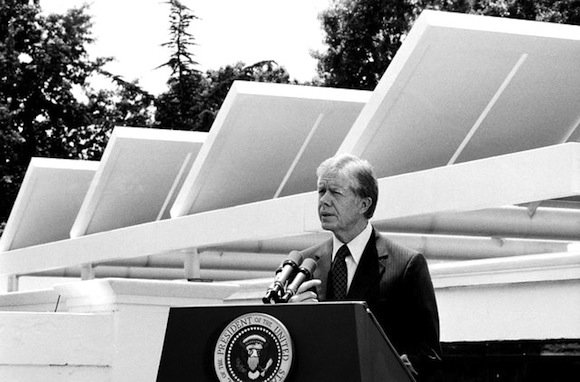Energy in America: The History of Sustainable Energy Movements
Matthew Point, April 3 2013
As America uncovers vast swathes of oil and natural gas, the balance of the energy battle has shifted yet again in the past few years. The prices, availability, and environmental impacts of fossil fuels have caused many changes in governmental policy and societal views over the years. However, many of these sustainable energy movements have been overshadowed by legislation, market forces, or a lack of sustained willpower. Among the most important movements in America have been those towards solar energy, wind farming, and even conservation in the form of recycling.
Sun Powered Society
One of the first sustainable energy movements, and perhaps one with the most potential, is the solar power movement that began in earnest in the 1980s. Considering that the sun powers the large majority of life on the Earth, it is no surprise that capturing as much of that energy as possible is in our interest. Due to heightened oil prices, the necessity for alternative forms of energy was great in the early 1980s and lead to some of the first commercial solar plants.
The sustainable solar movement made great strides during early years, but fluctuations in fossil fuel prices diminished returns immensely throughout the past few decades. Until 2006, most of the solar projects in the United States were funded in spite of little economic benefit due to the high installation cost. Thankfully, within the past few years, investors have been willing to install photovoltaics for free in order to gain access to a long term purchasing agreement of power. In 2009, a total of 90% of the solar energy installations were created in this way.
Wind Farming in America
The wide open spaces of the United States seem like a perfect place for wind farming and indeed, many of largest states have vast tracts of land dedicated to this endeavor. Unlike sun-powered photovoltaic capture, using wind as energy has been around for thousands of years. Greek engineers created the first wind mills and much of the known world was utilizing the device over a thousand years ago. Still, modern wind farming did not become popular until the early 1980s. Driven by increasing fuel prices at that time, the first wind farm was created in New Hampshire with a total of 20 turbines producing 30 kilowatts.
Energy producing states such as Texas have seen heavy investments into wind farming. Perhaps realizing that fossil fuels will eventually run dry, some in Texas and the Plains states are also investing in a different energy future. As a country, wind farming off-shore is the next step in the sustainable energy movement. Although much of Europe has been utilizing non-obtrusive off-shore benefits for two decades, the United States is only recently starting to develop the infrastructure of its own.
Recycling Energy We Have
Recycling is another energy movement that has garnered increased interest throughout the United States. Dating back to the First World War, recycling material was an important way to save energy, but recent movements have been focused on recycling energy itself. Since the early 1990s, when chemical combinations were perfected for electrical battery use, the consumption of rechargeable batteries has grown twice as fast as that of non-rechargeables. When it comes to recycling these toxic and often hazardous energy products, it would seem that Americans are paying attention.
While Americans do use millions of batteries every year and recharging them will have an impact, it remains yet to be seen whether this can have as lasting an impact as the solar and wind power models that already exist.
Energy For the Future
Despite all of these sustainable energy movements, there are still many questions about the future. New technology has made previously unattainable energy much easier to extract, but environmental effects are causing widespread public outcry. Still, most Americans prefer to have cheap energy rather than expensive, but environmentally friendly energy, which makes it difficult to alter policy.
The history of sustainable energy movements has largely been tied to the price of oil, natural gas, and other fossil fuels, but the exhaustibility of these resources is prompting even large-scale corporations to invest in solar energy, wind power, and in recharging the existing energy sources that we have.
